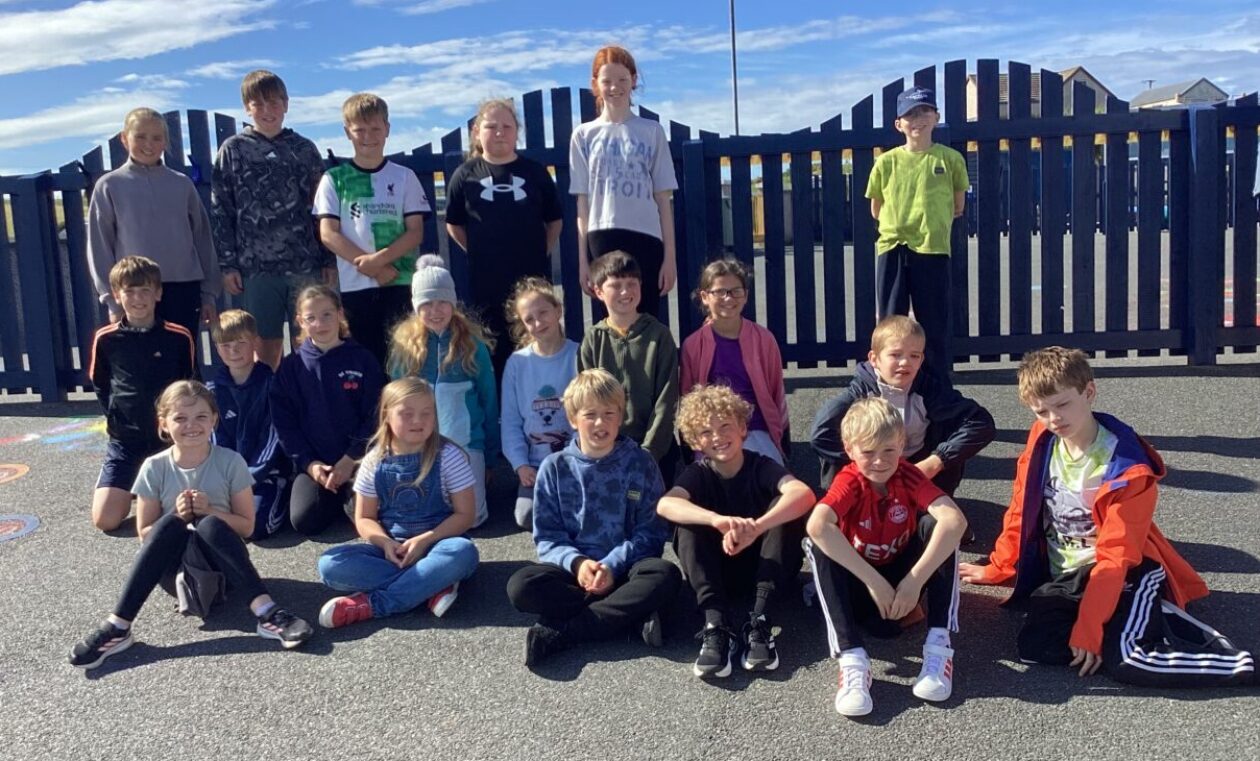On Thursday 27th September, Neil Cruickshank came to talk to P6/7 about the development of Sumburgh Airport and the surrounding area during WWII. It was an excellent presentation by Neil, full of interesting and surprising information, supported by a fascinating collection of wartime photographs. The children were surprised to learn that Sumburgh Airport began life as Sumburgh Links and that the first planes landed straight onto the grass.
We learnt that Shetland was of great strategic importance during WWII and that in November 1939 3 Gloster Gladiator fighters (Faith, Hope and Charity) were sent to Sumburgh to defend Shetland and the Fair Isle Channel. Sumburgh became a R.A.F. station and work began on building tarmac runways. There were many interesting visitors to the aerodrome including Beaufort fighters, Spitfires and a De Havilland Mosquito which landed here on its way back from a raid on the Gestapo Headquarters in Oslo.
Neil told us many sad accounts of wartime crashes in and around Shetland including three Canadians who lost their lives when their damaged Bristol Blenheim reconnaissance plane crashed-landed at Grunay in the Out Skerries (20th March 1944).
After morning break we all set off by bus, accompanied by Mrs Leslie, to see some of the wartime remains still visible today on and around Scholland.
We saw remains of the huge line of ‘tank traps’ which were part of the first line of defence.
Above right is all that remains of an anti-aircraft gun post.
The Virkie school (above left) was used a a hospital during the war and local children had to use the previous school which was built in 1800s.
The Virkie school in WWII is now used as a store. We tried to imagine what it was like back in the 1940s and the children who went there.
We walked up the old army road alongside what was Goat Camp which housed soldiers and airmen during the war- there was even a barber, chemist and post office there.
We had a super time seeing lots of interesting things left behind from WWII, including the floor tiles in Dr Aitchison’s house-all that is left of his house which was demolished because it was in the flight path of the newly built runway.
A highlight for many was seeing one of the last machine-gun turrets remaining in Britain, which used to rotate 360 degrees, and now lies rusting in a field.
All of us in P6/7 would like to say a huge thank you to Mr Cruickskank and Mrs Leslie for an excellent morning. We all learnt a great deal about World War II in the Sumburgh area.















What an interesting Blog post! I really enjoyed reading about your trip, it sounds fabulous! So much to see and hear … and all right on our doorstep.